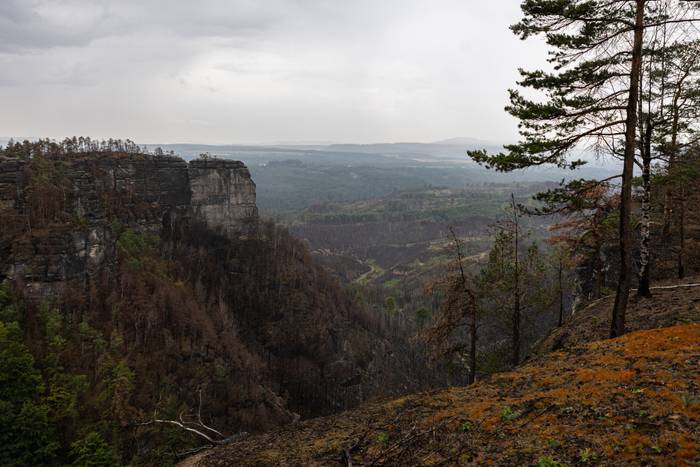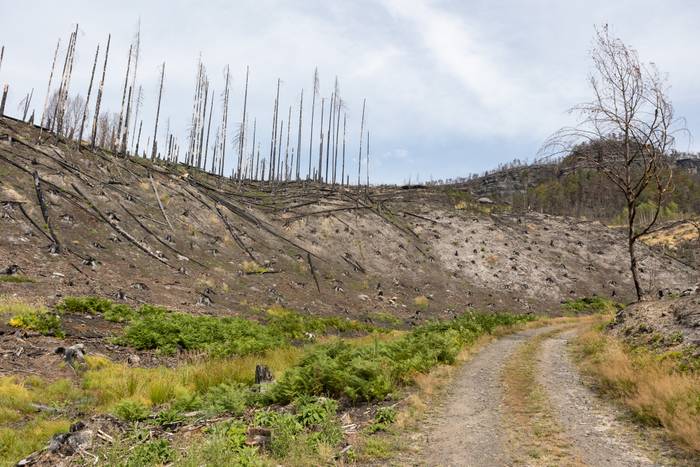This time, the FIRE-RES-supported investigation on wildfires in Europe brings the readers to the Czech Republic. One year after the devastating fire in July 20222, the reporter Zuzana Vlasatá spent a day in the Bohemian Switzerland National Park, with local experts Dana Vébrová and Jakub Hruška.

On the first anniversary of the destructive fire in the Bohemian Switzerland National Park in the Czech Republic, the area is showing signs of recovery. The broader context of climate change, an initial act of arson, and historical forest management practices all contributed to the severity of the fire. Rising temperatures and prolonged drought exacerbated the fire’s spread, challenging traditional firefighting methods. The region experienced its sixth hottest summer since 1961, creating conditions conducive to wildfires.
EDJNet’s transnational journalistic investigation of wildfires across Europe turned the spotlight to the park, with a detailed account of the day the author Zuzana Vlasatá spent in the company of Jakub Hruška, professor of environmental sciences and Dana Vébrová, the head of the National Park Monitoring Department.
Hruška, an environmental sciences expert, played a key role in investigating the fire’s causes. Contrary to popular belief, the decision to leave dry spruce trees did not exacerbate the fire. The aftermath highlights the resilience of birch and other vegetation, providing hope for the forest’s regeneration.
The park, known for its stunning landscapes, faced public and media scrutiny over its forest management practices. Hruška, who is also an influential internet personality, has been instrumental in dispelling misconceptions surrounding the fire. The region’s unique ecological dynamics, with birch emerging as a fire-adapted champion, demonstrate nature’s ability to rebound.
